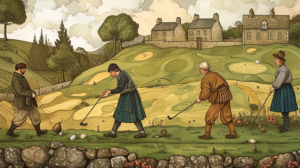You step up to the first tee, waggle your club, and send your drive sailing immediately out-of-bounds. Without missing a beat, you tee up another ball and swing away.
What just happened? You took a mulligan – the infamous do-over that epitomizes recreational golf.
Mulligans are extra strokes allowed in casual play to erase poor shots, usually off the first tee when golfers are still loosening up. They enable friends to laugh off flubs and enjoy rounds together regardless of skill level.
While their origins remain uncertain, mulligans have defined golf’s amateur spirit for years.
But what exactly does the term mean, and what are the customs behind mulligan use?
Let’s dive in to unlock the history and rules around golf’s beloved mulligan.
What is a Mulligan in Golf?
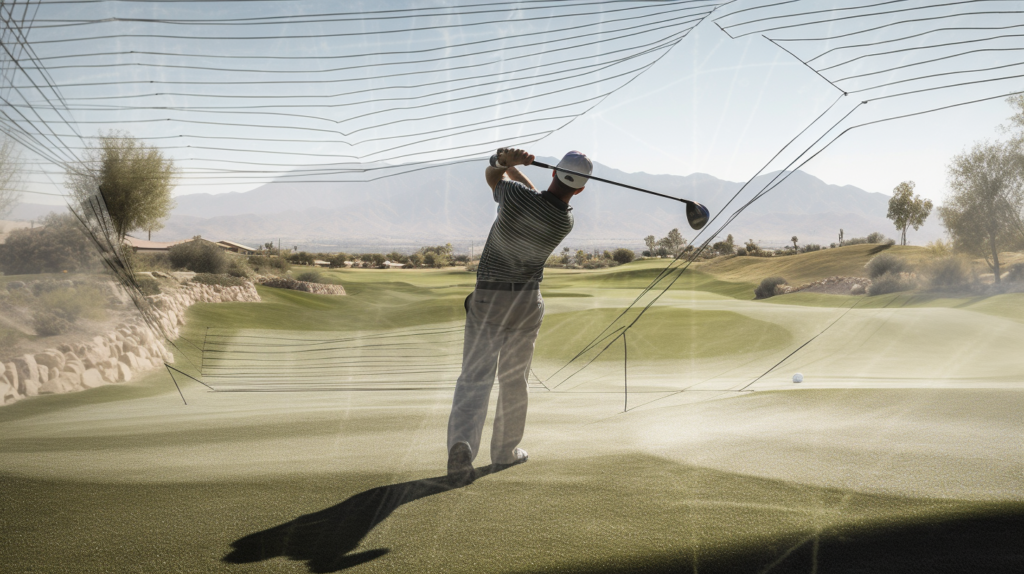
A mulligan is an extra stroke that is sometimes taken by golfers to redo a poor shot, usually off the first tee. It acts as an informal “do-over” that allows golfers to avoid counting a bad shot that might set the negative tone for the rest of the round.
Mulligans are widely used in casual play as a fun way to erase a swing that does not represent a player’s true ability. However, they generally do not have a place in strict competitions or tournaments.
Origins and History Behind the Term
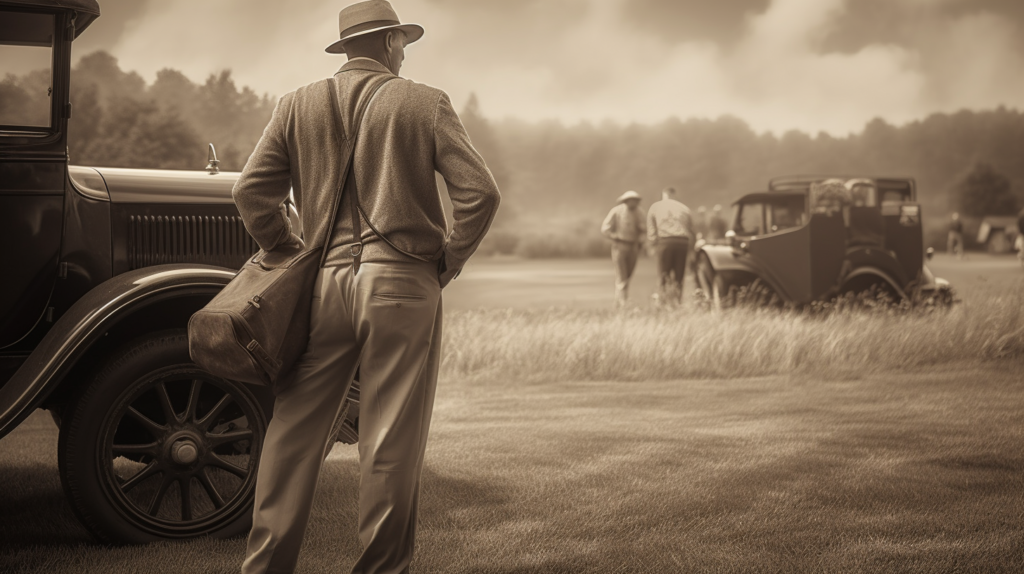
The origination of the word “mulligan” in relation to golf remains unclear, with a few theories existing about its etymological background. One idea is that it comes from a Canadian golfer named David Mulligan who played in the 1920s.
As the story goes, Mulligan hit a poor first shot during a round and decided to re-hit the shot without counting the first one, thus establishing the practice. However, there exists little evidence to confirm this tale.
Another theory is that “mulligan” is related to the Scottish word “mull,” which can mean to botch or crumble something up, or to make a mess of it. This would connect logically to hitting an initial shot so poorly that it deserves a complete redo.
References to “mulligans” began appearing in writing in the mid-20th century. The first known published mention comes from an article about golf in Esquire magazine in 1945.
Over the subsequent years, the term became ingrained across the vast golfing world as a concept that all golfers understand.
Typical Mulligan Rules and Etiquette

The standard rules and etiquette surrounding mulligans in golf have been informally established over time. The most common convention is that a player is allowed to take a mulligan only on the very first shot of a round, meaning the tee shot on the opening hole.
This restricts their use to being more of a warmup or do-over off the first drive when players may still be getting loose and comfortable. Generally, only one mulligan attempt is afforded per player in a group.
Sometimes groups will vote to allow more, but a single mulligan is the traditional approach.
Strict tournaments and competitions, whether at the recreational or professional level, typically forbid the use of mulligans during play. The formal competitive nature of these events means that every stroke must count in full.
However, the majority of casual round between friends employ some allowance for mulligans as a way to promote an enjoyable time.
An important component of proper mulligan etiquette in these cases is that all members of a playing group should be consulted and allowed to partake if anyone is taking a re-shot off the first tee. Permitting only select players to hit again would provide an unfair scoring advantage.
Reasons Golfers Use Mulligans and Strategic Considerations
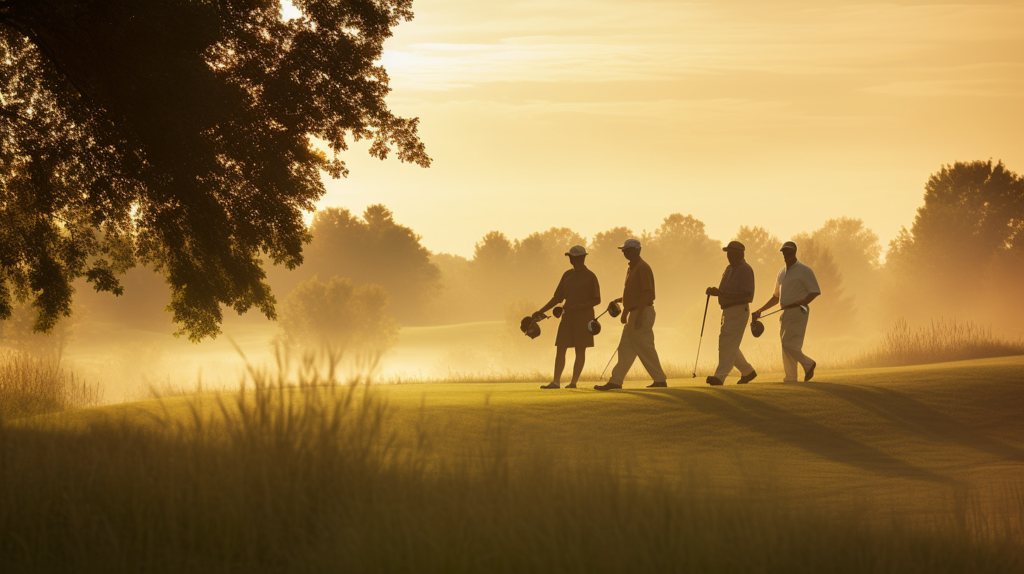
There are both psychological and strategic rationales behind golfers employing mulligans during friendly rounds.
Considering how many rounds begin with the most challenging shot — a long drive while still getting warmed up — players often take mulligans to avoid carding an early double bogey or worse. Beginning a round this way can be demoralizing and set the tone for a high score.
Being able to erase the shot relieves pressure. Other times, golfers may simply duff their first drive out-of-bounds or into a penalty area.
Being able to replay the shot eliminates frustration over essentially losing a needed ball right from the start.
Of course, beyond just emotional benefits, there are strategic decisions related to maximizing the value of a mulligan as well. Golfers will often reassess their initial club selection and reconsider their swing mechanics or ball position placement.
The mulligan offers a chance to implement adjustments right away as opposed to waiting until the next tee box when conditions might be different.
Players also weigh whether it makes sense to use the mulligan attempt off the tee or possibly reserve it to replay a terrible shot later in the round instead. Doing the mental math on these risk-reward scenarios adds another layer of strategy.
In the end though, mulligans remain more about providing a fun reprieve in casual games as opposed to serving any competitive mandate.
Using them takes some pressure off a first swing, allows players of differing abilities to play together not worrying about holding anyone back, and lets the focus turn more toward enjoying time together.
With their origins perhaps unknown but their purpose clear within recreational play, mulligans have become an integral way that many golfers define and achieve an amateur golfing experience.
What is a Mulligan in Golf?
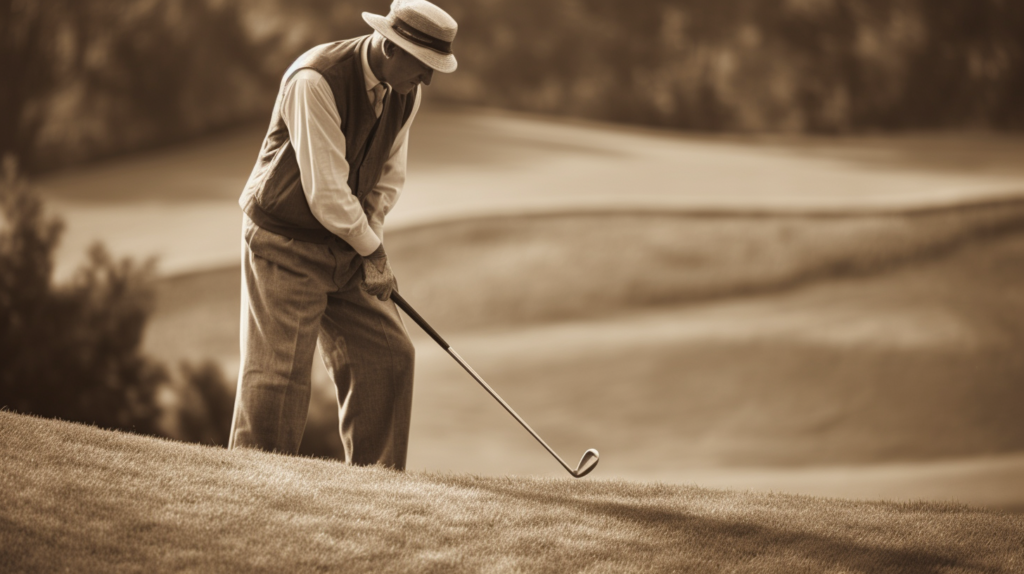
A mulligan is an extra stroke that is sometimes taken by golfers to redo a poor shot, usually off the first tee. It acts as an informal “do-over” that allows golfers to avoid counting a bad shot that might set the negative tone for the rest of the round.
Mulligans are widely used in casual play as a fun way to erase a swing that does not represent a player’s true ability. However, they generally do not have a place in strict competitions or tournaments.
The benefit of the mulligan in recreational play is that it relieves some pressure off the first tee when players may still be getting comfortable and loose from a physical or mental perspective. They also reduce frustration if a tee shot goes significantly awry in an unlucky manner.
While some golfers employ strategic thinking to maximize the potential of their one allotted mulligan each round, the primary purpose remains providing an avenue for casual players to enjoy the game together without worrying about subpar shots spoiling the fun.
Rules for their use vary but often entail allowing them only on the first tee, permitting only a single re-hit per player and requiring consensus from the entire group before taking one.
Origins and History Behind the Term
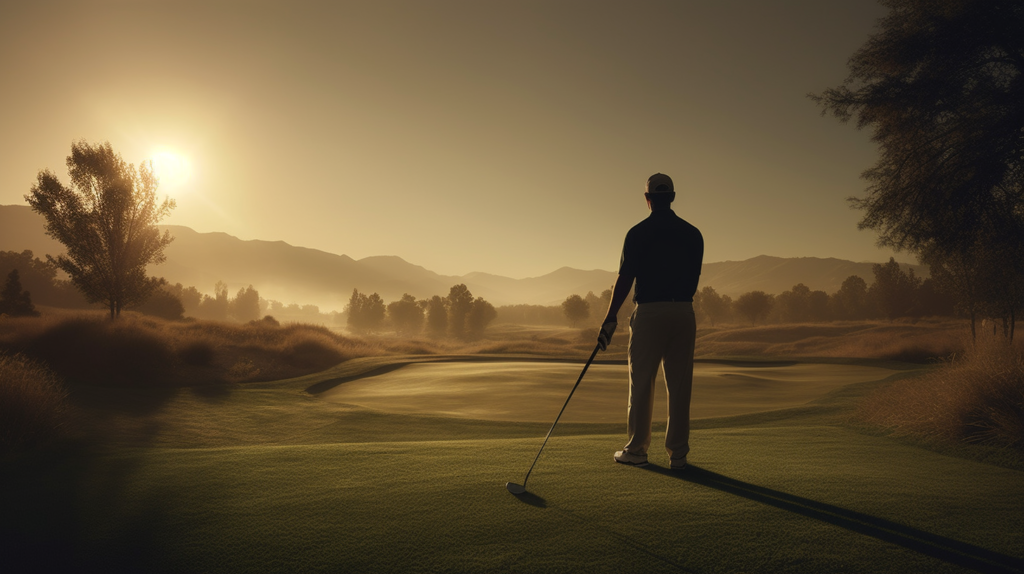
The origination of the word “mulligan” as it relates to golf has no definitive account, although theories exist attempting to explain its etymology.
The most oft-repeated story credits a 1920s Canadian golfer named David Mulligan, who supposedly hit a poor opening tee shot during a round and decided to hit an additional ball without counting the first attempt while playing with friends.
However, factual evidence supporting this tale is scarce.
Another possibility is that the term stems from the Scottish word “mull,” carrying meanings that include crumbling something up or spoiling an effort. Applied to golf, this would connect logically to hitting a tee shot so errantly on the first hole that it deserves a complete re-do.
While its exact origins may never be confirmed, “mulligan” appeared in print within Esquire magazine in 1945 before becoming more ubiquitously used in golf circles.
Typical Mulligan Rules and Etiquette

Standard etiquette allows using a mulligan only on the initial tee shot that starts a round and typically grants only a single extra attempt per player. This helps even the playing field for competitors during a friendly recreational round.
However strict competitions and tournaments or official club events generally forbid their use to maintain integrity of scores. Casual groups decide collectively whether to permit them during a round, making concessions to avoid bogey-laden openers while still emphasizing fun.
Groups playing together must decide collectively whether to allow mulligans before teeing off to avoid confusion. If they are deemed acceptable on a given day, all participating members traditionally have the chance to hit a second tee ball if desired.
Custom holds that players should not take it upon themselves to replay a bad shot without consent from fellow players. Asking politely avoids any etiquette breaches or misuse.
Players aim for consistency, allowing Mulligans sparingly or prohibiting their use altogether.
Golfers refer to this first stroke redo as a “breakfast ball” or ”morning mulligan” based on the notion that early tee times coincide with the routine meal.
Those opting to hit an initial mulligan shot wait until their fellow competitors also tee off before replaying, upholding pace of play etiquette. Some clubs may limit when groups can utilize the first tee depending on overall play volume each day.
Otherwise as an unofficial rule, reliance on that one extra drive per golfer endures as a signature mulligan tradition.
Reasons Golfers Use Mulligans and Strategic Considerations
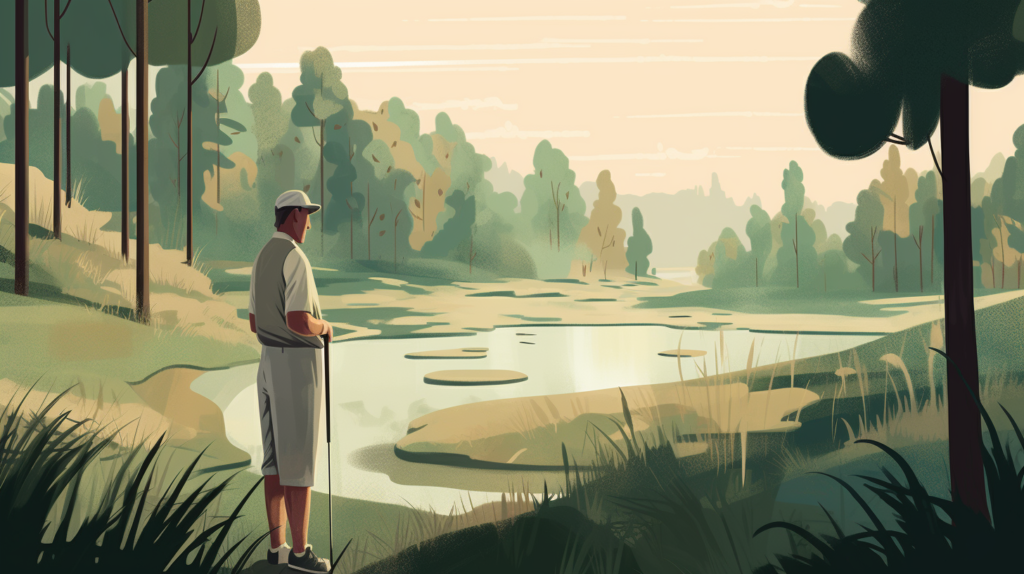
The incentive behind using mulligans revolves mainly around mitigating a terrible opening shot off the first tee versus plotting strategic advantage.
Because most golfers need a few holes to establish rhythm, nerves sometimes translate into clumsy swings misrepresentative of their talent. Whether hooked out of bounds or sliced into water, the resulting penalty strokes can doom a scorecard quickly.
Mulligans allow erasing such fluky shots.
Beyond emotional benefits, mulligans do present strategic considerations. A golfer might adjust club selection the second attempt, correcting between overreaching with driver versus undershooting their target with an iron.
They also present opportunity to re-address elements like swing plane and ball position that may improve the do-over outcome. Weighing whether to utilize it on the first tee or preserve it allows reacting to subsequent poor shots.
Capitalizing requires recognizing when advantage outweighs later need.
Some players even employ mulligan strategy in terms of choosing when during the opening hole would prove optimal for a redo rather than automatically replaying the tee shot.
If the initial drive finds fairway but leaves an uncomfortably lengthy approach over water, taking the mulligan on that second stroke instead might pay higher dividends. But for most golfers focused on camaraderie over cutthroat tactics, there are simpler motivations.
Hitting an early second ball removes pressure, avoids slowdowns reloading tee balls and sets a positive atmosphere for an enjoyable round.
What is a Mulligan in Golf?
A mulligan is an extra stroke that is sometimes taken by golfers to redo a poor shot, usually off the first tee. It acts as an informal “do-over” that allows golfers to avoid counting a bad shot that might set the negative tone for the rest of the round.
Mulligans are widely used in casual play as a fun way to erase a swing that does not represent a player’s true ability. However, they generally do not have a place in strict competitions or tournaments.
The benefit of the mulligan in recreational play is that it relieves some pressure off the first tee when players may still be getting comfortable and loose from a physical or mental perspective. They also reduce frustration if a tee shot goes significantly awry in an unlucky manner.
While some golfers employ strategic thinking to maximize the potential of their one allotted mulligan each round, the primary purpose remains providing an avenue for casual players to enjoy the game together without worrying about subpar shots spoiling the fun.
Origins and History Behind the Term
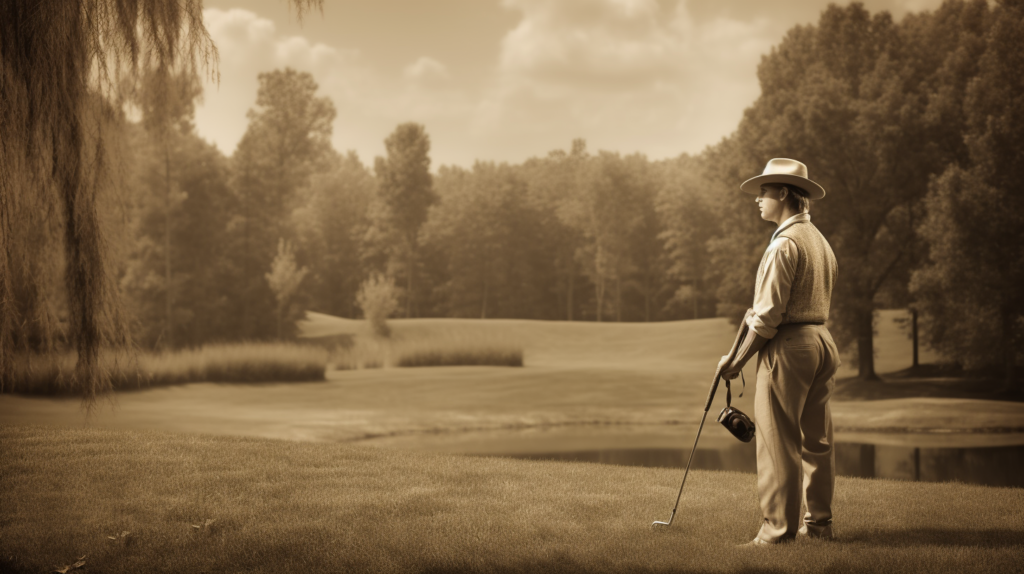
The origination of the word “mulligan” as it relates to golf has no definitive account, although theories exist attempting to explain its etymology.
The most oft-repeated story credits a 1920s Canadian golfer named David Mulligan, who supposedly hit a poor opening tee shot during a round and decided to hit an additional ball without counting the first attempt while playing with friends.
However, factual evidence supporting this tale is scarce.
Another possibility is that the term stems from the Scottish word “mull,” carrying meanings that include crumbling something up or spoiling an effort. Applied to golf, this would connect logically to hitting a tee shot so errantly on the first hole that it deserves a complete re-do.
While its exact origins may never be confirmed, “mulligan” appeared in print within Esquire magazine in 1945 before becoming more ubiquitously used in golf circles.
Typical Mulligan Rules and Etiquette

Standard etiquette allows using a mulligan only on the initial tee shot that starts a round and typically grants only a single extra attempt per player. This helps even the playing field for competitors during a friendly recreational round.
However strict competitions and tournaments or official club events generally forbid their use to maintain integrity of scores. Casual groups decide collectively whether to permit them during a round, making concessions to avoid bogey-laden openers while still emphasizing fun.
Groups playing together must decide collectively whether to allow mulligans before teeing off to avoid confusion. If they are deemed acceptable on a given day, all participating members traditionally have the chance to hit a second tee ball if desired.
Custom holds that players should not take it upon themselves to replay a bad shot without consent from fellow players. Asking politely avoids any etiquette breaches or misuse.
Players aim for consistency, allowing Mulligans sparingly or prohibiting their use altogether.
Reasons Golfers Use Mulligans and Strategic Considerations

The incentive behind using mulligans revolves mainly around mitigating a terrible opening shot off the first tee versus plotting strategic advantage.
Because most golfers need a few holes to establish rhythm, nerves sometimes translate into clumsy swings misrepresentative of their talent. Whether hooked out of bounds or sliced into water, the resulting penalty strokes can doom a scorecard quickly.
Mulligans allow erasing such fluky shots.
Beyond emotional benefits, mulligans do present strategic considerations. A golfer might adjust club selection the second attempt, correcting between overreaching with driver versus undershooting their target with an iron.
They also present opportunity to re-address elements like swing plane and ball position that may improve the do-over outcome. Weighing whether to utilize it on the first tee or preserve it allows reacting to subsequent poor shots.
Capitalizing requires recognizing when advantage outweighs later need.
Some players even employ mulligan strategy in terms of choosing when during the opening hole would prove optimal for a redo rather than automatically replaying the tee shot.
If the initial drive finds fairway but leaves an uncomfortably lengthy approach over water, taking the mulligan on that second stroke instead might pay higher dividends. But for most golfers focused on camaraderie over cutthroat tactics, there are simpler motivations.
Hitting an early second ball removes pressure, avoids slowdowns reloading tee balls and sets a positive atmosphere for an enjoyable round.
Conclusion
In the end, mulligans remain an integral, lighthearted tradition that allows recreational golfers of all skill levels to enjoy the game together.
While their origins are uncertain, mulligans have defined casual golf for generations as an avenue for camaraderie to take precedence over scorecards.
So whether strategically employed or simply embraced to relieve first-tee tension, mulligans ultimately serve a greater purpose – making sure a flubbed shot never gets in the way of friendship on the fairways.


